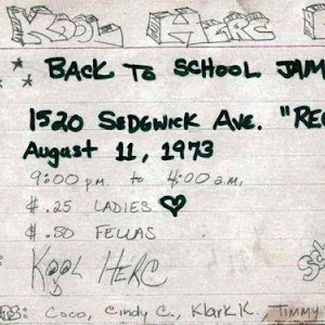
Hip hop turns 50: what brands can learn from its enduring success
Any brand that aspires to long term leadership can learn from hip hop’s blend of familiarity, freshness and fandom, says Leo Burnett's Josh Bullmore
15 August 2023
Fifty years ago, one of the most successful phenoms in pop culture was born
It’s August 11th 1973. In an apartment in The Bronx, NY, an 18 year old, Clive Campbell, who will go on to be known as DJ Cool Herc, throws a party with his sister. Everyone’s dancing to James Brown, Aretha Franklin.
And then Clive does something new.
Instead of one turntable he has two, and two copies of the same record, and when he gets to a percussion breakdown that everyone loves to dance to, he goes from one record to the other, extending it as long as he likes, firing up the small crowd.
And that’s the start of it all.
Over time, DJing this way will be joined by breakdancing, rhyming and graffiti and become hip hop.
Today of course, it can be heard across the world from South Central to Streatham, the Bronx to Beijing. (And if you want to join the party the BBC Soundz app is currently hosting an amazing selection of mixes, podcasts and dedicated shows).
Beyond the music, hip hop’s influence is clear right across pop and consumer culture. Pharrell Williams is Louis Vuitton’s men’s creative director. Dr. Dre’s Beats headphones is a billion dollar brand. Hip hop’s five wealthiest artists alone were estimated to be worth over £3 billion in 2022.
Hip hop is an amazing example of how an idea can go from society’s margins to dominating the mainstream. Globally. And then staying there.
So what’s the secret?
At Leo Burnett UK, we explored the art and science of hit-making to help us develop our PopIndex tool which measures brands' progress towards populist success. Working with social psychologists and pop culture theorists, we identified three ingredients that allow a music artist, TV series, film franchise, idea or brand to cross the chasm from the margins to the mainstream.
Enjoying and sustaining mainstream success demands three (always the magic number, thank you De La Soul) ingredients: familiarity, freshness and fandom.
A property must be familiar enough to be reassuringly accessible, fresh enough to be continually interesting, and all whilst creating opportunities for people to belong to a fandom.
Hip hop is a brilliant example of this combo in action.
Familiarity comes from the format. Samples and the spoken word continue to define the genre.
Freshness has always been highly prized in hip hop. Think Doug E. Fresh, the Fresh Prince of Bel Air, “So fresh and so clean”, or even the Fresh 3 MCs who doubled down with their single Fresh.
And the music remains endlessly fresh. samples feed on the changing musical culture of the times. And rap responds to the world around it, both engaging with the challenges of the day and providing escape from them. Successive generations have used it as a way to both fight the power, in the words of Public Enemy, or be playfully escapist (with my personal fave here being De La Soul’s classic, 3 Feet High & Rising, which was finally released onto streaming platforms this year).
Last but not least, hip hop has always been built on fandom. It was born for a close-knit crowd back in that flat in the Bronx. It thrives on “wave your hands in the air, wave them like you just don’t care” crowd participation. And it offers boundless self-expression beyond the music, through dance, graffiti and fashion.
This blend of familiarity, freshness and fandom is equally visible in now iconic brands.
Nike is one year older than hip hop. The Swoosh is instantly familiar. The brand stays fresh through political engagement (like the Kaepernick campaign) as much as escapism (through Jordan and the legion of sports heroes). And the brand is masterful at building fandom through digital and real world communities.
McDonald’s is another US original that conquered the globe. The golden arches are one of the most familiar and recognised symbols in the world, iconic comms keep the iconic products fresh, and the brand has long based its advertising around truths (most recently in the Raise Your Arches campaigns in the UK) that celebrate the brand’s fandom.
So there you go. It takes familiarity, freshness and fandom.
And of course, someone to try something new. Clive Campbell couldn’t have known what he’d unleashed on that summer night all those years ago.
What could you start today?
Josh Bullmore is the chief strategy officer of Leo Burnett UK






